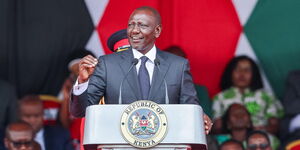Kenyans should brace themselves for high fuel prices starting on March 2023.
This is after Russia announced that it will disrupt the world’s oil supply by slashing production by 500,000 barrels per day.
Russia is the world’s third-largest producer of oil and slashing its output will see demand for the product rise significantly, subsequently increasing prices.
Russia Deputy Prime Minister Novak Alexander explained how the reduced production would hurt global economies like Kenya.
“The slashing may not only provoke a decrease in investments in the oil sector and, consequently, an oil shortage but can also be spread to other sectors of the global economy, with similar consequences, in the future,” Novak warned.
Currently, the price of 1 litre of petrol globally is Ksh47 while in Kenya it retails at Ksh179.
Russia’s cut in production will see global prices rise to Ksh67 per litre which projects fuel prices in Kenya to rise to Ksh255 per litre.
The price in Kenya could even rise further than the projected Ksh255 per litre because currently Kenya imports oil from Saudi Arabia at Ksh66 per litre way above the global average.
The sharp increase in fuel prices in Kenya could be prevented if the government continues the subsidy program.
While President William Ruto’s government has enacted a subsidy program on diesel and kerosene, the government did away with petrol subsidies that the former administration enacted.
On September 14, the President announced that the move to drop the petrol subsidy would help Kenyans in the long term.
"If the subsidy continues to the end of the financial year, it will cost the taxpayer Sh280 billion, equivalent to the entire national government development budget," the President explained how the subsidy was hurting the economy.
If the government maintains its stance on subsidies, it will mean that Kenyans will have to dig deeper into their pockets to pay for the increased pump prices.
With many industries in Kenya relying on fuel, this will increase cost of production and subsequently the cost of living.
The Energy and Petroleum Regulatory Authority (EPRA) is set to announce new pump prices on Tuesday, February.












